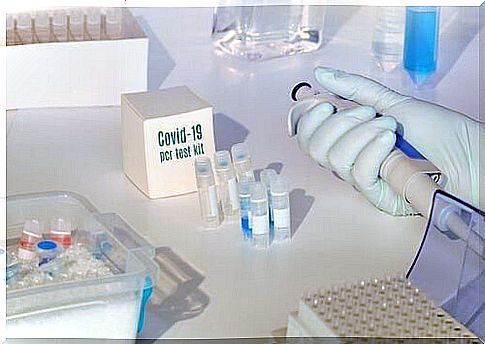Viral Load, What’s The Use Of Knowing It?

The viral load, a technique used in biochemistry, allows to know the quantity of virus present inside an organism. This is an important fact that the infectious specialist must take into account. Based on the viral load values, a doctor can understand if the current therapy is working.
The disease for which this parameter is most used is AIDS (acquired immunodeficiency syndrome). It is also used for hepatitis C, another chronic condition caused by a virus. Even acute viral diseases can make use of this data, as in the case of the current Coronavirus.
Immunosuppressed subjects, due to their vulnerability, are excellent candidates for this test. Knowing the viral load allows to identify an infection in the bud and to intervene in a timely manner.
The viral load therefore refers to the calculation of how many viruses are contained in a sample of body fluid. This is an estimate, not a precise figure, which takes into account the quantity of viral particles per millimeter of fluid, for example blood.
Viral load in an infection
In all infections caused by a virus, the mode of propagation within the host is similar. It can change the type of cell that is attacked early on, but eventually the mechanism tends to repeat itself.
The virus enters the body, searches for the target cell, penetrates it and exploits its metabolism to create more copies of itself. The viral particles multiply, the immune system tries to defend itself and the battle begins. Meanwhile, the virus continues to infect cells and destroy those that have already been exploited.
At some point in the war, a balance is struck, in favor of one or the other. If the immune system got the better of the virus, the body recovers from the disease, although there is a possibility of a relapse. If the virus is stronger, it will survive our attacks indefinitely, to the point of causing death.
What is viral load, then? A measure of how many copies of the virus there are at any given time. If the value is high, it means that we are in a very active phase of the infection, with an intense multiplication of viral particles.
It is estimated that when the viral load is high, we are in a more contagious phase. The higher the number of copies of the virus, the higher the chance of it spreading. There is also a relationship between patient symptoms and viral load.

PCR and viral load calculation
The most commonly used technique in the laboratory to determine the viral load of a sample is PCR (Polymerase Chain Reaction).
PCR allows you to multiply, and therefore measure, a very small segment of DNA or RNA. Put simply, the test allows you to replicate genetic information to obtain a larger volume that makes measurement possible.
This method was devised in 1986 and quickly caught on. Almost every country currently has the infrastructure to run PCR at a very acceptable speed.
The polymerase chain reaction is not only used to quantify viral load, it also has very diverse uses, such as in forensics. The ability to obtain large copies of DNA from a small fragment is also useful in scientific fields that go beyond microbiology.
What is the use of knowing viral load?

It is a method that is proving very useful right now with COVID-19. Another research that has benefited from it is that on HIV.
According to science, the viral load spike in a coronavirus infection occurs 5-6 days after infection. This data is important, especially for doctors. It is, in fact, the most likely time when the patient will need the emergency room or will be hospitalized.
Similarly, children, although favored by a benign course of the disease, are known to have a high viral load. For this reason they are referred to as large carriers and transmitters of SARS-Cov-2.
In AIDS, with the viral load results in hand, the virologist is able to establish which antivirals should be taken by the patient, in what dose and for how long. Similarly, it is possible to assess whether a previous treatment has had the desired effect. The goal, of course, is to lower the viral load to the values that the protocol indicates as safe.
An advantageous technique
In conclusion, viral load is a laboratory technique destined to remain. She is relatively young, but her advantages are more than evident. The greater its use in the world, the better the control of infectious diseases such as HIV or Covid-19.









